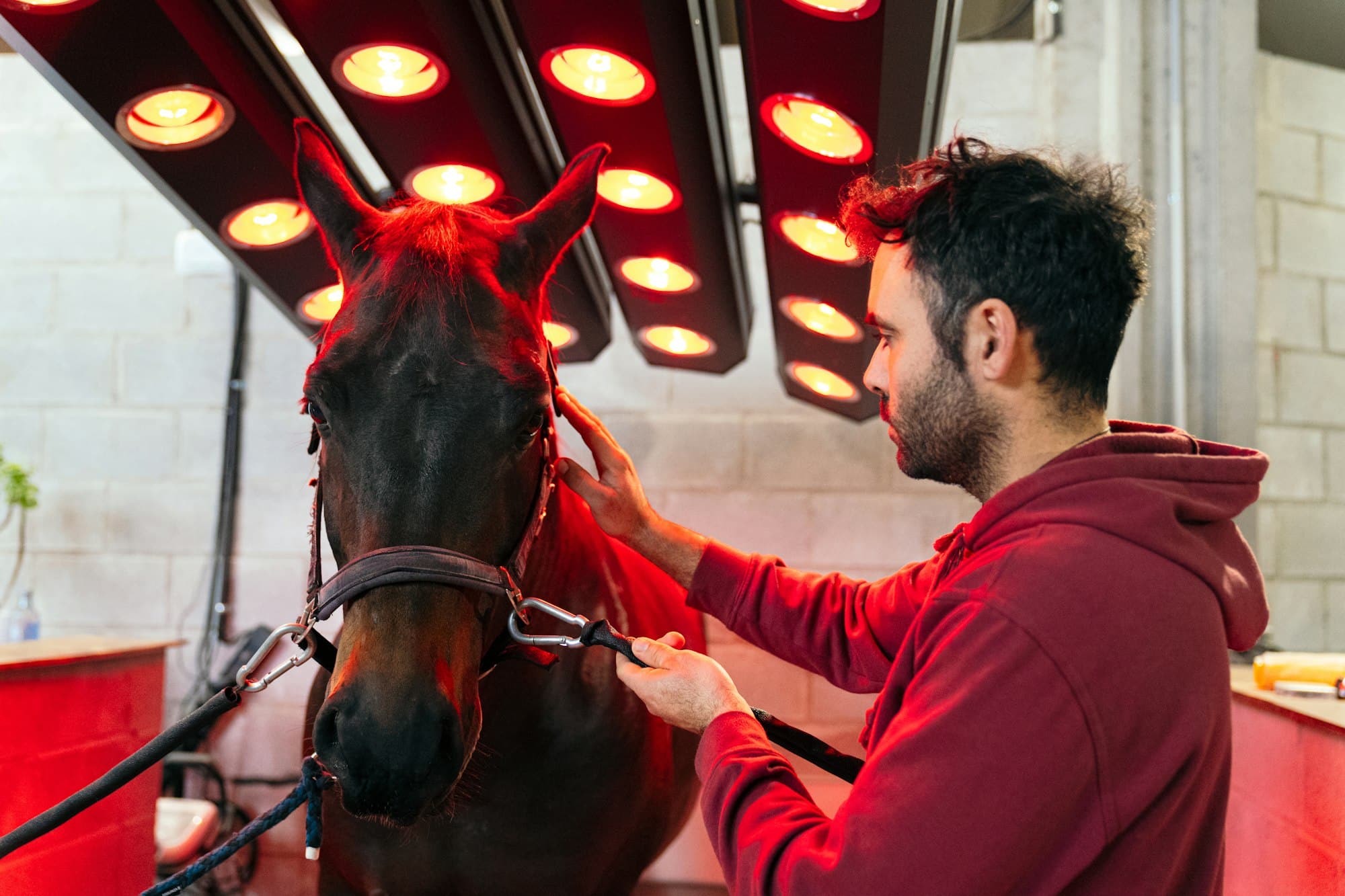How Does Rehabilitation Through Equine Therapy Work for Physical Disabilities?

The world of therapy is vast and varied, with diverse methodologies applied to help individuals cope with and overcome a range of physical and cognitive issues. One such approach that has been gaining traction in recent years involves the use of horses. Known as hippotherapy, this is a physical, occupational and speech language therapy treatment strategy that uses equine movement. This therapy has brought about remarkable transformations in the health and lives of countless people. Therefore, understanding how rehabilitation through equine therapy works for physical disabilities is of paramount importance.
Hippotherapy: A Brief Overview
Before diving into the nuances of how hippotherapy aids in rehabilitation, it’s essential to understand what this therapy entails. The term "hippotherapy" is derived from the Greek word "hippos," meaning horse. Hippotherapy is unique because it capitalizes on the rhythmic and repetitive movements of a horse to improve the rider’s motor and sensory abilities.
A lire en complément : What Are the Effects of Intermittent Silence on Mental Health and Creativity?
For decades, scholars and researchers have been studying the influence of horse riding on humans. According to a study published in PubMed, horse riding activates the sympathetic nervous system, thereby improving learning and memory. Because the movements of a horse are similar to the human gait, patients can improve balance, coordination, strength, and other physical abilities by riding horses.
The Role of Equine Therapy in Physical Rehabilitation
The process of equine-assisted therapy involves more than simply riding a horse. Licensed therapists, often in collaboration with a team of equine specialists, meticulously plan and administer the therapy. The process begins with an evaluation of the patient’s needs, following which a customized plan is developed.
Cela peut vous intéresser : Can the Practice of Yoga Nidra Improve Sleep Quality and Reduce Anxiety?
Each therapy session is tailored to address specific physical disabilities. For instance, if a child has limited mobility due to muscular dystrophy, the therapy may involve exercises that enhance muscle strength and flexibility. The rhythmic movement of the horse aids in this by engaging the rider’s muscles in a manner similar to walking.
Research highlights the effectiveness of equine therapy in improving various physical attributes. A group of scholars found that horseback riding can impact core strength, balance, and functional mobility positively.
Cognitive Benefits of Equine Therapy
While the physical benefits of hippotherapy are substantial, the cognitive gains cannot be overlooked. Riding a horse requires a degree of focus and mental engagement that can lead to improved cognitive abilities over time.
A study published in the American Journal of Occupational Therapy found that children who participated in equine therapy showed significant improvements in social interaction and communication skills. The researchers concluded that the therapy might be a useful intervention for children with autism spectrum disorder.
From a psychological perspective, the interaction with horses can also be calming for many patients. The act of caring for the animal, coupled with the physical activity of riding, can reduce anxiety and improve overall mental well-being.
Adjusting to the Therapeutic Process
Adjusting to the therapeutic process of hippotherapy may take time for some individuals, especially for those who are unfamiliar with horses. However, equine specialists and therapists are trained to introduce the horse and the therapy in a calm and controlled environment. Over time, patients often develop a bond with their therapy horse, which can actually play a key role in their motivation and progress.
This process also allows for individual growth. As patients learn to control a large animal like a horse, they often experience a boost in confidence and self-esteem. Furthermore, the sense of achievement they get from mastering horse riding skills can be tremendously empowering.
A Community Approach to Rehabilitation
Equine therapy is not just about the individual and the horse; it’s about creating a supportive and inclusive community. Many equine therapy centers encourage group sessions, where people with similar disabilities can interact, learn from each other, and support one another’s journeys.
In a group setting, patients can witness others facing similar challenges, which can inspire and motivate them to push their own boundaries. Group sessions also provide a platform for social interaction and the development of interpersonal skills.
In conclusion, there is a growing body of evidence highlighting the benefits of hippotherapy for individuals with physical disabilities. From improved strength and mobility to enhanced cognitive function and mental well-being, this form of therapy offers a holistic approach to rehabilitation. Despite the challenges that may come with adjusting to this form of therapy, the potential benefits make it a worthwhile consideration for those seeking a unique, effective method of rehabilitation.
Hippotherapy and Neurological Disorders
The impact of hippotherapy, or equine-assisted therapy, is not limited to physical rehabilitation alone. In fact, its application extends to a variety of neurological disorders, making it a versatile therapeutic option. The rhythmic, symmetrical movements of a horse can stimulate neural pathways and lead to enhanced brain function, according to a study cited on PubMed Google.
For instance, children with cerebral palsy often struggle with gross motor skills such as walking and maintaining balance. Therapeutic horseback riding can mimic the human gait, thereby facilitating the development of these essential skills. Studies published on Google Scholar have revealed that children with cerebral palsy who participate in equine therapy show significant improvements in motor function and balance compared to a control group.
Furthermore, equine therapy has been found beneficial for individuals on the autism spectrum. The requirement to focus on controlling a horse and responding to its movements can enhance concentration and communication skills. A systematic review of various studies confirmed these findings, highlighting that individuals with autism spectrum disorders showed improved social responsiveness and reduced symptoms after participating in equine-assisted therapy.
Equine Therapy’s Influence on Mental Health
In addition to its physical and neurological benefits, equine therapy also holds tremendous potential in mental health rehabilitation. The serene environment of a riding center, coupled with the connection formed with a therapy horse, can create a relaxing and stress-alleviating experience for patients.
Individuals battling mental health issues such as anxiety or depression can benefit greatly from the calming influence of a therapy horse. According to PATH Intl, an international therapeutic riding organization, interacting with horses can lead to reduced stress levels, enhanced mood, and improved social skills.
The discipline and patience required for horseback riding can also foster resilience, enabling patients to better manage their mental health conditions. Furthermore, a free article published on PubMed highlighted that animal-assisted therapy, such as hippotherapy, can boost self-esteem and instill a sense of purpose in individuals battling mental health issues.
Conclusion: Embracing the Power of Equine Therapy
In conclusion, the potential of equine therapy in the realm of physical and mental rehabilitation is immense. From addressing gross motor challenges in children with cerebral palsy to enhancing cognitive function for those on the autism spectrum, the applications of this therapy are broad and diverse.
Moreover, the impact of hippotherapy on mental health cannot be overlooked. The bond formed with a therapy horse, the discipline required for horseback riding, and the serene environment all contribute to overall mental well-being. Thus, while the initial adjustment to this therapy may be challenging for some, the potential benefits make it a noteworthy consideration for those seeking a unique and effective rehabilitation method.
Given the abundance of evidence from sources like PubMed and Google Scholar, it’s evident that hippotherapy is more than just a novel approach—it’s a scientific, therapeutic strategy that offers a holistic approach to rehabilitation. With the continued research on this form of therapy, it’s anticipated that more individuals will harness the power of equine-assisted therapy to overcome their physical and mental health challenges.
